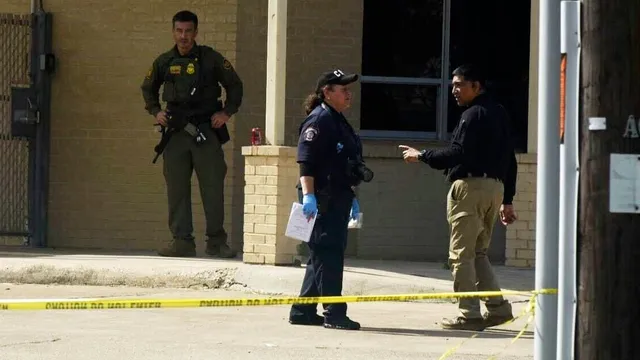
Gunman opens fire at Border Patrol facility in Texas, suspect dead
2025-07-07 17:31- A gunman opened fire on federal agents at a Border Patrol facility in McAllen, Texas.
- Local police and Border Patrol agents responded to the incident, resulting in the gunman's death.
- The attack caused significant disruptions, including delays at the nearby airport and raised concerns about safety.
Express your sentiment!
Insights
On Monday, July 7, 2025, a shooting incident occurred at a U.S. Border Patrol facility in McAllen, Texas. A 27-year-old man named Ryan Louis Mosqueda, equipped with an assault rifle and tactical gear, opened fire on federal agents. The incident unfolded early in the morning near the McAllen International Airport, causing significant disruption in the area. Authorities reported that Border Patrol agents along with local police promptly responded to the attack and exchanged gunfire with the shooter. Mosqueda was ultimately killed, while one McAllen police officer sustained injury during the confrontation and was reported in stable condition. Witnesses described a chaotic scene as gunfire erupted, underscoring concerns regarding violent incidents targeting law enforcement personnel. The Department of Homeland Security confirmed that the shooter was neutralized, and no federal agents were injured during the exchange. The motive behind Mosqueda's attack remains under investigation, with the FBI taking the lead in the ongoing inquiry. The exchange of fire led to all flights at the nearby McAllen International Airport being delayed, impacting local operations and raising security concerns among passengers and staff. Law enforcement agencies have emphasized the seriousness of the attack, highlighting a trend of escalating violence against immigration enforcement facilities in recent times. This incident follows another shooting involving a police officer near an ICE detention center just days earlier, prompting heightened scrutiny of security measures at federal agencies. The community is still reeling from the shock of the morning's events, with local officials expressing solidarity with law enforcement and reinforcing a commitment to ensuring safety in the region. In light of these developments, authorities are urging the public to remain vigilant and report any suspicious activity. They are also assessing the response protocols to enhance safety for personnel stationed at Border Patrol facilities. As investigations continue, further updates will be provided by law enforcement officials regarding the circumstances of the incident and the condition of the injured officer.
Contexts
In recent years, Texas has experienced a troubling trend of violence against law enforcement officers, raising alarm among officials and citizens alike. This violence is often attributed to a combination of heightened tensions between police and communities, as well as a growing anti-law enforcement sentiment that has emerged in various parts of the country. Such sentiments can be exacerbated by national events that cast law enforcement in a negative light, leading to a perception that police are not only ineffective but also adversarial to the communities they serve. The implications of this violence are profound, affecting not only the officers involved but also the overall safety of communities, as trust erodes between law enforcement and the public. This breakdown of trust can lead to increased crime rates and a reduced capacity for law enforcement to effectively perform their duties, perpetuating a cycle of violence and fear.\n\nAdditionally, statistics indicate an upsurge in attacks on police officers in Texas. According to the latest data, assaults on law enforcement personnel have reached alarming levels, with many officers reporting encountering violence during routine stops or responses to calls. Such incidents are often accompanied by firearms, increasing the risk of injury and fatalities. In particular, regions with significant socio-economic challenges tend to experience a higher frequency of these encounters, suggesting that underlying issues such as poverty and lack of resources may contribute to the violence. Local and state officials are now faced with the challenge of addressing these social determinants while simultaneously ensuring the safety and well-being of both officers and community members.\n\nThe Texas government has responded with various initiatives aimed at enhancing officer training, improving community relations, and implementing measures designed to de-escalate potential violent situations. Programs focusing on mental health training and conflict resolution are increasingly emphasized, equipping officers with the skills necessary to manage tensions without resorting to force. Additionally, community outreach initiatives aim to foster a collaborative atmosphere between police and residents, encouraging dialogue and mutual respect. By investing in these preventative strategies, Texas aims to create safer environments for both law enforcement and the public they protect.\n\nHowever, significant obstacles remain. Polarization surrounding the debate over law enforcement can complicate discussions, leading to further mistrust. Advocacy for police reform often clashes with calls for enhanced police funding and support, placing lawmakers in a difficult position as they attempt to balance community demand for safety with calls for accountability. The ongoing nature of this violence necessitates a multi-faceted approach that addresses not only the immediate need for officer protection but also the root causes of violence. Only through comprehensive reform and committed community engagement can Texas hope to reduce violence against law enforcement and rebuild trust within its communities.